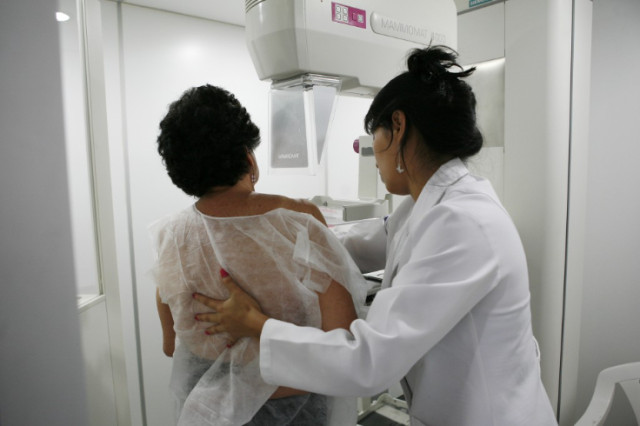A new American Cancer Society report has stated that despite a decline in the rate of breast cancer deaths in the United States, the incidence of the disease in recent times have continued in an "upward trend," especially among younger ages, and a significant racial disparities remain.
The study, published on Tuesday in CA: A Cancer Journal for Clinicians, found some good news: The overall breast cancer death rate in the US dropped about 44% between 1989 and 2022, which translates to almost 518,000 fewer breast cancer deaths during that time.
This is largely thanks to advances in cancer treatments and in detecting illness early through screening, which is recommended for women at average risk starting at age 40.
But there were also some concerns as the incidence of the disease has climbed by 1%
As cancer cases rise among younger adults, some types of the disease have higher burden than others, the study found.
The Chief Executive Officer, American Cancer Society and the America Cancer Society Cancer Action Network, Karen Knudsen, said, “If we look at the last decade or so, we’ve seen breast cancer incidence rise at about 1% year-over-year increase, and the steepness of that increase does not affect all women in this case equally.
“There is a slightly higher increase in the rate of breast cancer diagnosis for women who are under age 50 versus those that are above age 50,” she said.
A separate study published in January also found that breast cancer incidence rates among women ages 20 to 49 rose over the past 20 years.
The trend follows a pattern seen recently with other cancer types, such as colorectal cancer, as more people are being diagnosed at younger ages than has traditionally been seen.
Researchers from the American Cancer Society, Weill Cornell Medicine and Harvard Medical School analysed data on breast cancer incidence and deaths from the National Cancer Institute and registries at the US Centres for Disease Control and Prevention, dating to 1975.
They found some significant differences in the data by race and state as well as age.
The researchers found that Black women continued to be more likely to die from the disease, as they had a 38% higher death rate than White women despite being 5% less likely to develop breast cancer.
“If you look actually more carefully at the mortality data, this is really driven by young women particularly,” said Dr. William Dahut, chief scientific officer at the American Cancer Society.
“If you look at Black women between the ages of 20 and 29, their chances of dying from breast cancer is two times greater than their White colleagues.”
The data showed that Black women have the highest mortality rate overall. The rate ranged from about 12 deaths per 100,000 women in the Asian American/Pacific Islander community to about 27 deaths per 100,000 in the Black community.
The report noted that Asian American and Pacific Islander women had the fastest increase in breast cancer incidence each year both among those younger than 50, at 2.7% per year, and in women 50 and older, at 2.5% per year.
“The acceleration of breast cancer incidence rates among Asian American and Pacific Islander is particularly disturbing. Emerging data suggest that some gene mutations predisposing to breast cancer may result in greater risk among Asian women compared to White women,” Dr. Ruth Carlos, a professor of radiology and the assistant chair for clinical research at the University of Michigan, who was not involved in the new report, wrote in an email.
“It is disappointing that outcomes appear static for Black/African-American women,” she added.
They project states that this year, nearly 311,000 cases of invasive breast cancer would be diagnosed among US women, affecting about 1 in 8, and more than 42,000 women will die from breast cancer.
“They have uncovered worrisome trends especially regarding breast cancer in younger women,” she wrote.
“Environmental risks, lifestyle risks and genetic risk factors may be contributing to this rise.”
“The alarming increase in incidence overall of breast cancer has been noticed and noted, and we see it in the office every day when we see patients of all ages, but we see more of the young ones than we used to,” Calfa said, adding that her youngest breast cancer patient was diagnosed at 20.
“We’ve been witnessing and seeing patients presenting to us at the higher rate, at the younger age,” she said.
She stressed, “While we’re noticing the increase in incidence of breast cancer in younger patients, the trends have been really significant and consistent throughout other cancer types, and that makes us wonder and it’s not only a breast-specific finding.”




















